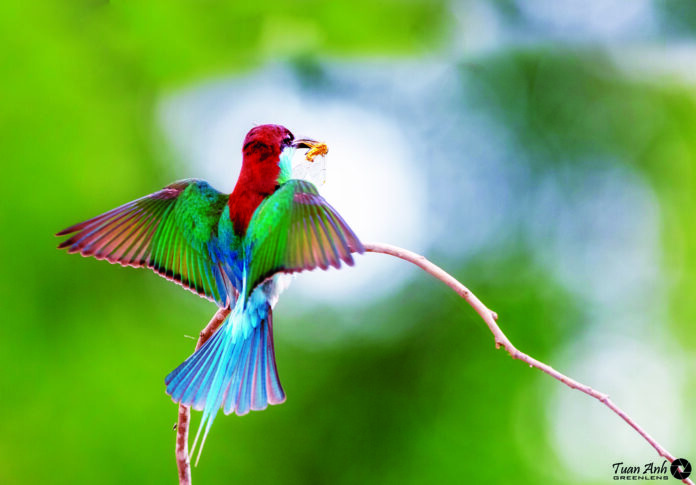BEING A GREEN, HEALTHY URBAN AREA AND ESPECIALLY FOCUSSING ON PRESERVING NATURE… ALL OF THESE ADVANTAGES IN PHU MY HUNG HAVE FOSTERED A COMMUNITY LOVES NATURE, ENJOYS EXPLORATION, CHALLENGES, SPORTS. RECENTLY, THE SIGHT OF A FLOCK OF WILD STORKS GATHERING ON GREEN ISLAND IN THE MIDDLE OF CRESCENT LAKE HAS SPARKED GREAT EXCITEMENT. AMONG THE NATURE-LOVING RESIDENTS LIVING IN PHU MY HUNG, ONE WAS ESPECIALLY EAGER TO “HUNT” FOR THIS MOMENT UPON HEARING THE NEWS, AS HIS PASSION LIES IN PHOTOGRAPHING WILD BIRDS LIVING IN FORESTS, WETLANDS AND SEAS… IN THIS ISSUE, WE WOULD LIKE TO INTRODUCE THIS RESIDENT.
Mr. Le Tuan Anh, a resident of Phu My Hung, is a technician, an entrepreneur and above all, a nature lover. His love is expressed through his eyes – the eyes of a photographer – with a particular affection for wild birds amidst the great outdoors: forests, rivers, lakes, and seas.
Tuan Anh’s journey into photography began during his university student days, when he became a student of Mr. Vo An Ninh, a legendary photographer in Vietnamese photography. Tuan Anh considers himself one of Master Vo’s last students. The most important lesson he learned was patience in the craft. This virtue allowed him to set up camp and endure days in the forest, waiting for birds to appear. This hobby is far from leisurely – it demands hardship: trekking through forests, wading streams, and sleeping curled up in the wild at night.

Moreover, he must always be ready. Upon hearing that there were mother bird raising chicks in Vung Tau, he once drove from a meeting in the Central Highlands back to Ho Chi Minh City, then headed straight to Vung Tau at 2 a.m. to camp and wait for the perfect shot.
Tuan Anh also studies wild bird knowledge diligently: learning the Vietnamese, English, and scientific names of species; understanding their habitats, migration patterns, and preferred altitudes,… He researches where and how birds appear, as well as their behaviors to set up the site for photographing, for example, knowing that certain birds like to eat crickets, he scatters crickets to lure them in… More than that, equipment is another major investment: a photographer’s gear can range from tens of millions to half a billion VND. His 800mm telephoto lens alone cost 200 million VND…
So what is all this hardship for? Tuan Anh doesn’t photograph birds for collection, research, exhibitions or rare species. What he seeks is the observation of a wonderful natural process, hidden just beyond the human sight. There are birds high in trees, in remote jungles, over untouched swamps, or flocks migrating from infinity and back, seen only once in a lifetime. By observing the things out of sight, he discovers a mysterious, magical world of nature – something to cherish and protect.
He shares that Phu My Hung’s green environment and good ecological conditions have attracted many rare bird species, and he has photographed a wide variety of wild birds right there. He is currently tracking a flock of herons nesting on an island in Crescent Lake, planning a new shoot. He is overjoyed that even in a major city, such favorable conditions exist for wild birds. He hopes that, on a broader scale, the greenery of Ho Chi Minh City will be preserved to maintain this unique charm.
BEE-EATERS NESTING
Bee-eaters are distributed across Africa and Asia, with a few found in southern Europe, Australia, and New Guinea. They are known for their bright, colorful plumage, slender bodies, and long tails. There are 26 species in the family. All have long down-curved rostrums, and medium to long wings, sharp or round heads. Males and females usually have similar plumage. Bee-eaters feed mainly on insects, especially bees. Vietnam is home to 5 of the 26 known bee-eater species. The Blue-throated bee-eater, 22-24cm in length, is a uncommon resident in the south-central and southern coastal regions of Vietnam. It breeds in the north and central areas and migrates through northern, central, and southern Vietnam.
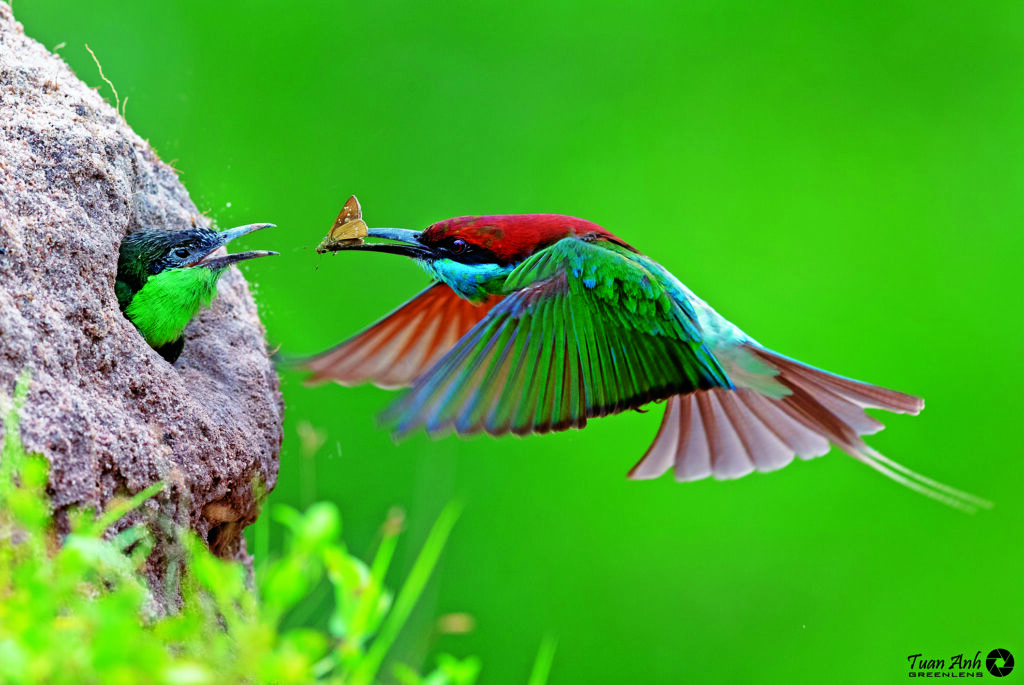
PSILOPOGON ASIATICA NESTING IN AN OLD TREE HOLLOW IN PHU MY HUNG
Psilopogon asiatica includes birds with glossy blue-green feathers. Psilopogon asiatica with red head, 22-23 cm long, is commonly found in the Northwest, Northeast, and North Central regions of Vietnam (such as Hoang Lien National Park, Muong Nhe Nature Reserve, and Tay Con Linh areas). Their habitats are deciduous evergreen forest and secondary forests at elevations of 400 to 2,400 meters.
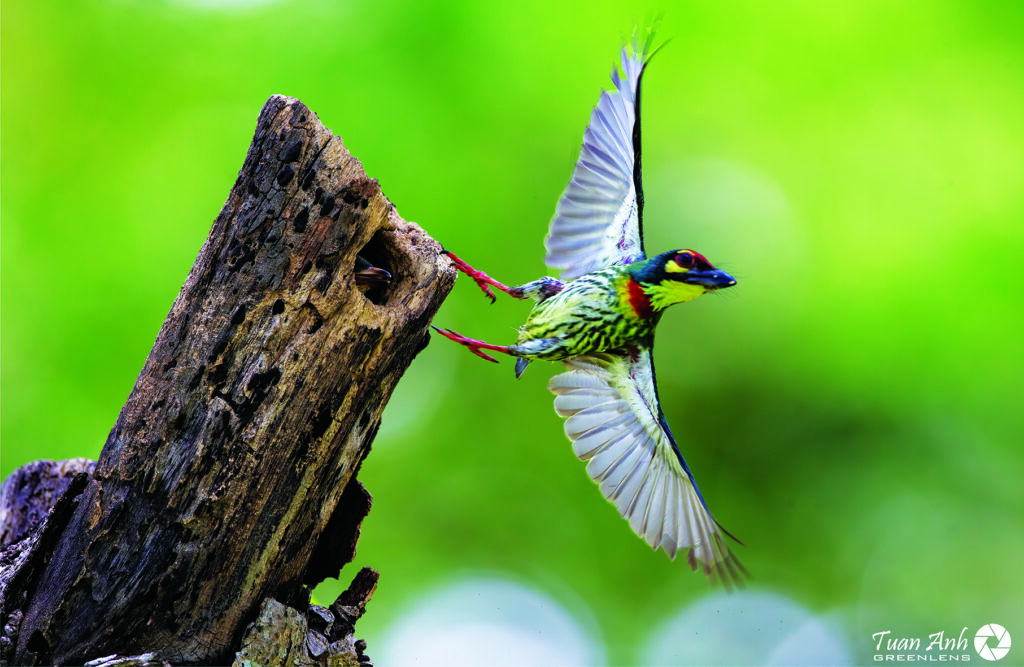
PLOEIDAE BUILDING INGENIOUS NESTS
This is a highly skilled and hardworking bird. It builds two types of nests: breeding nests for females and sleeping nests for males, all constructed by the males. This species is found in Cambodia, Indonesia, Laos, Myanmar, Thailand, and Vietnam. Its natural habitats include moist tropical or subtropical grasslands, lowland marshes, and cultivated fields.
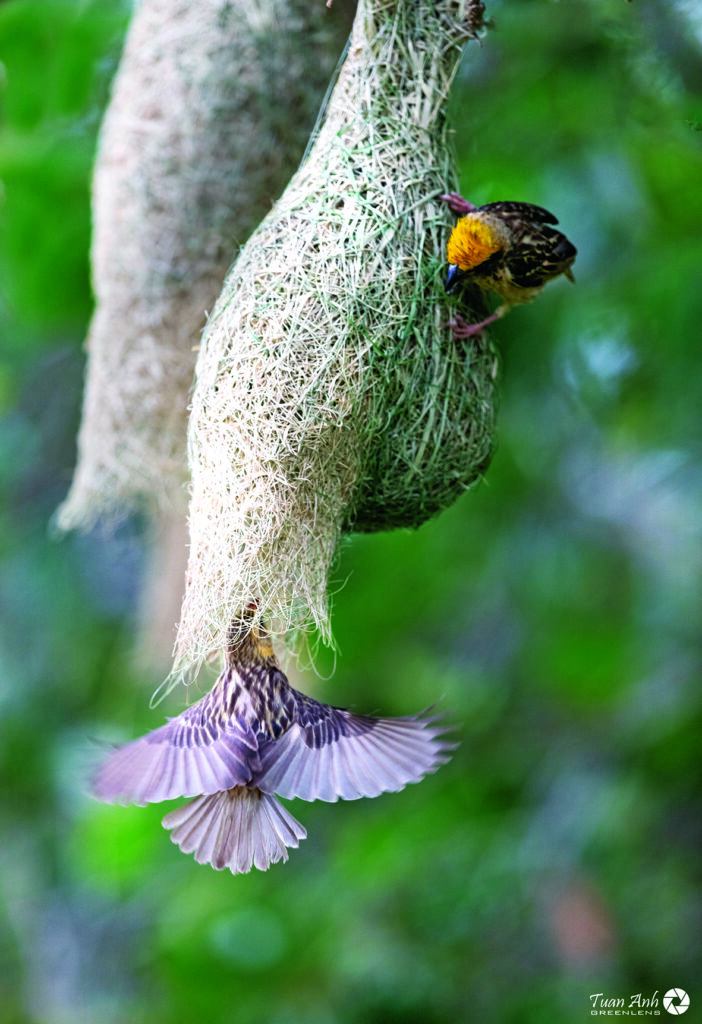
THE MIGRATORY BIRD MENTIONED IN TRINH MUSICIAN’S MUSIC
In the song “Diem Xua” by Trinh Cong Son, there’s a mention of a migratory bird in the lyrics:
“Rain keeps falling, stirring the sea of life,
How can you forget the traces of the migratory bird”.
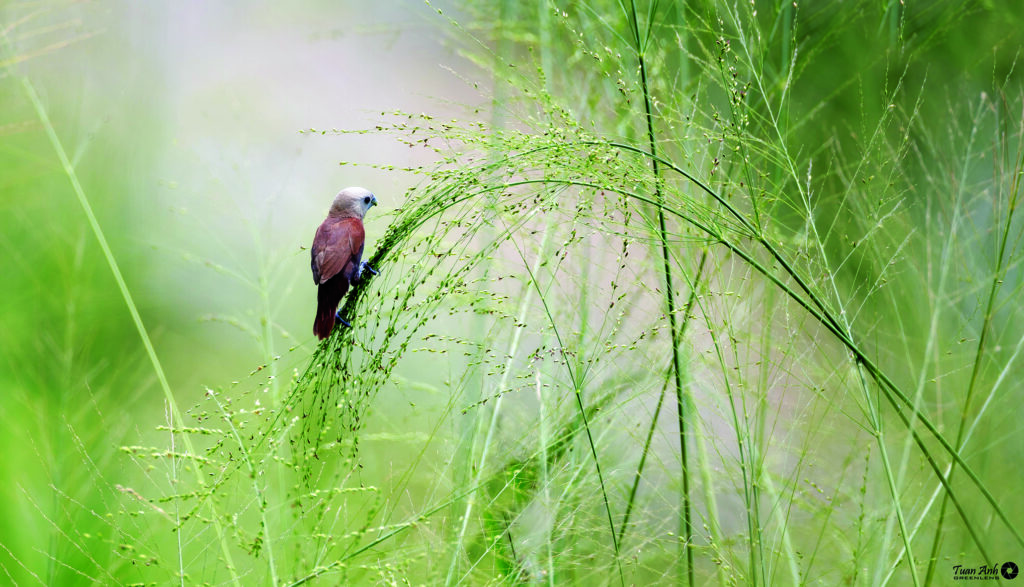
Here, “migratory bird” refers either to birds that travel seasonally or to the small bird with scientific name of Lonchura, colloquially called “migratory bird”. The White-headed Lonchura is a species commonly seen in southern Vietnam, thriving in marshlands and shrub areas. During the right season, they gather in large numbers in alluvial rice fields. They are distinguished by their light blue beak and snowy white head. This bird family includes small, seed-eating birds, often colorful and highly social. Many uniquely beautiful migratory bird species in this group are distributed across the continents of Australia, Asia, and Africa – including Vietnam.




